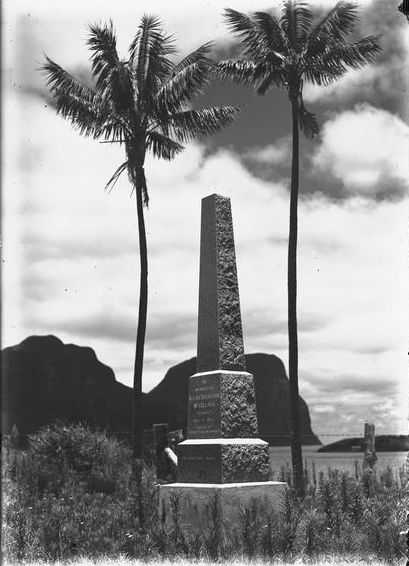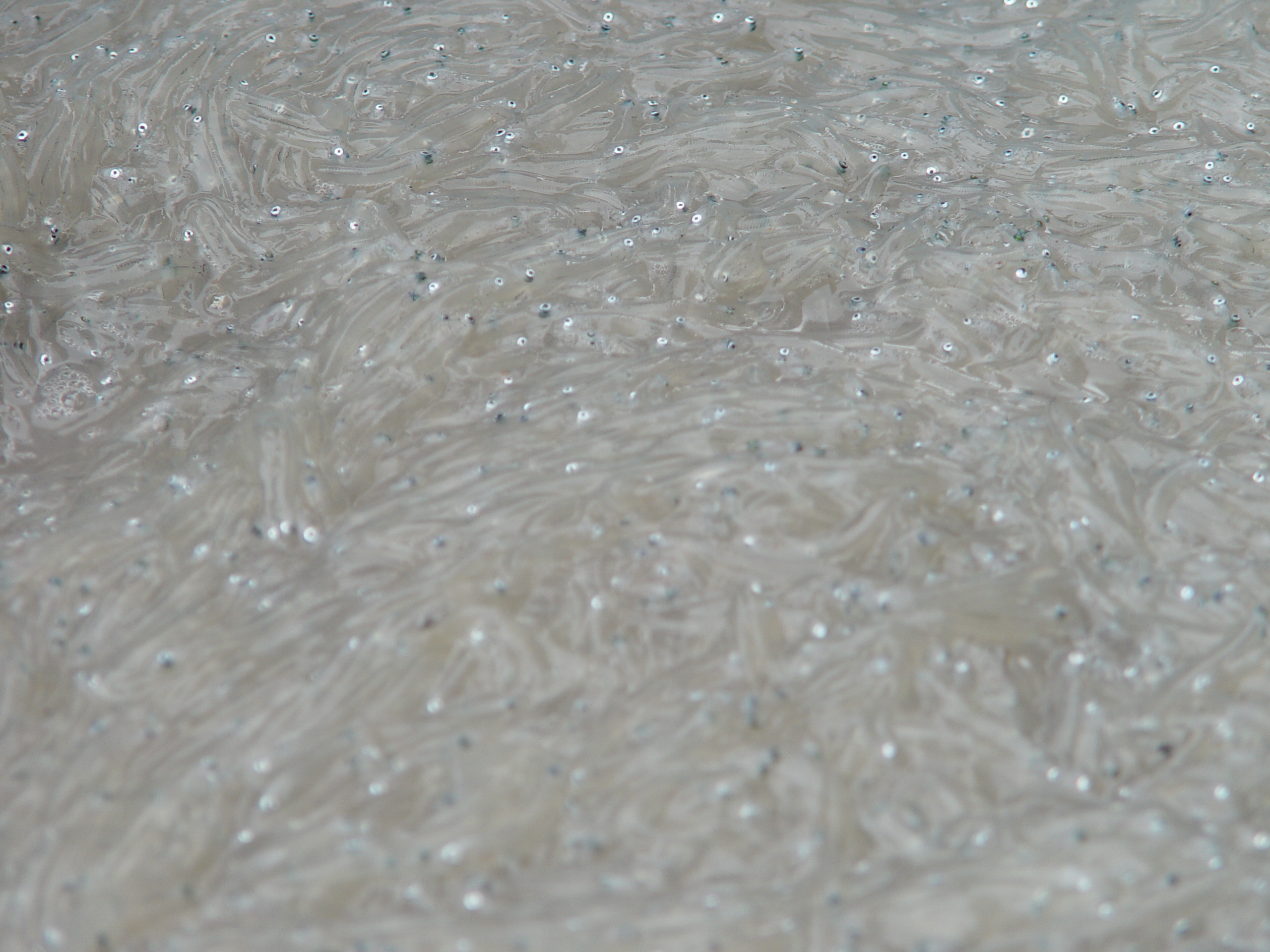|
Pseudaphritis Urvillii
The congoli (''Pseudaphritis urvillii''), also known as the freshwater flathead, marble fish, marbled flathead, sand trout, sanding, sandy, sandy whiting or tupong. is a species of marine ray-finned fish and it is the only species of fish in the monotypic family Pseudaphritidae and the genus ''Pseudaphritis''. It was initially classified as a member of the family Bovichtidae. Taxonomy The congoli was first formally described as ''Aphritis urvillii'' in 1832 by the French zoologist Achille Valenciennes but the name ''Aphritis'' was a junior synonym of the Diptera genus '' Aphritis'' named by Pierre André Latreille in 1805. The genus ''Pseudaphritis'' was described by the French zoologist Francis de La Porte Castelnau in 1872. The family Pseudaphritidae was first named by the Australian ichthyologist Allan Riverstone McCulloch in 1929. The Pseudaphritidae are the sister family of the Bovichtidae and Eleginopidae and these are all sister to the rest of the families in the ... [...More Info...] [...Related Items...] OR: [Wikipedia] [Google] [Baidu] |
Allan Riverstone McCulloch
Allan Riverstone McCulloch (20 June 1885 – 1 September 1925) was a prominent Australian ichthyologist. Born in Sydney, Australia, McCulloch began his scientific career at the age of 13 as an unpaid assistant to Edgar Ravenswood Waite in the Australian Museum where Waite encouraged McCulloch to study zoology. Three years later, he was employed as a "mechanical assistant", and five years after that, as curator of fishes, a post he held until his death. McCulloch collected and published prolifically; from his first paper in 1906 (published in ''Records of the Australian Museum''), no year passed without his making a contribution to science, and he wrote over 100 original papers in all, many including his own illustrations. McCulloch travelled widely for his collections, including trips to Queensland, Lord Howe Island, New Guinea, the Great Barrier Reef and various Pacific islands. His major research interest was in fish, but he was also given the responsibility of the crustace ... [...More Info...] [...Related Items...] OR: [Wikipedia] [Google] [Baidu] |
Notothenioidei
Notothenioidei is one of 19 suborders of the order Perciformes. The group is found mainly in Antarctic and Subantarctic waters, with some species ranging north to southern Australia and southern South America. Notothenioids constitute approximately 90% of the fish biomass in the continental shelf waters surrounding Antarctica. Evolution and geographic distribution The Southern Ocean has supported fish habitats for 400 million years; however, modern notothenioids likely appeared sometime after the Eocene epoch. This period marked the cooling of the Southern Ocean, resulting in the stable, ice-cold conditions that have persisted to the present day. Another key factor in the evolution of notothenioids is the preponderance of the Antarctic Circumpolar Current (ACC), a large, slow-moving current that extends to the seafloor and precludes most migration to and from the Antarctic region. These unique environmental conditions in concert with the key evolutionary innovation of Antif ... [...More Info...] [...Related Items...] OR: [Wikipedia] [Google] [Baidu] |
Endemic
Endemism is the state of a species being found in a single defined geographic location, such as an island, state, nation, country or other defined zone; organisms that are indigenous to a place are not endemic to it if they are also found elsewhere. For example, the Cape sugarbird is found exclusively in southwestern South Africa and is therefore said to be ''endemic'' to that particular part of the world. An endemic species can be also be referred to as an ''endemism'' or in scientific literature as an ''endemite''. For example '' Cytisus aeolicus'' is an endemite of the Italian flora. '' Adzharia renschi'' was once believed to be an endemite of the Caucasus, but it was later discovered to be a non-indigenous species from South America belonging to a different genus. The extreme opposite of an endemic species is one with a cosmopolitan distribution, having a global or widespread range. A rare alternative term for a species that is endemic is "precinctive", which applies to ... [...More Info...] [...Related Items...] OR: [Wikipedia] [Google] [Baidu] |
Tasmania
) , nickname = , image_map = Tasmania in Australia.svg , map_caption = Location of Tasmania in AustraliaCoordinates: , subdivision_type = Country , subdivision_name = Australia , established_title = Before federation , established_date = Colony of Tasmania , established_title2 = Federation , established_date2 = 1 January 1901 , named_for = Abel Tasman , demonym = , capital = Hobart , largest_city = capital , coordinates = , admin_center = 29 local government areas , admin_center_type = Administration , leader_title1 = Monarch , leader_name1 = Charles III , leader_title2 = Governor , leader_name2 ... [...More Info...] [...Related Items...] OR: [Wikipedia] [Google] [Baidu] |
Type (biology)
In biology, a type is a particular specimen (or in some cases a group of specimens) of an organism to which the scientific name of that organism is formally attached. In other words, a type is an example that serves to anchor or centralizes the defining features of that particular taxon. In older usage (pre-1900 in botany), a type was a taxon rather than a specimen. A taxon is a scientifically named grouping of organisms with other like organisms, a set that includes some organisms and excludes others, based on a detailed published description (for example a species description) and on the provision of type material, which is usually available to scientists for examination in a major museum research collection, or similar institution. Type specimen According to a precise set of rules laid down in the International Code of Zoological Nomenclature (ICZN) and the International Code of Nomenclature for algae, fungi, and plants (ICN), the scientific name of every taxon is almost al ... [...More Info...] [...Related Items...] OR: [Wikipedia] [Google] [Baidu] |
French Antarctic Expedition
The French Antarctic Expedition is any of several French expeditions in Antarctica. First expedition In 1772, Yves-Joseph de Kerguelen-Trémarec and the naturalist Jean Guillaume Bruguière sailed to the Antarctic region in search of the fabled Terra Australis. Kerguelen-Trémarec took possession of various Antarctic territories for France, including what would later be called the Kerguelen Islands. In Kerguelen-Trémarec's report to King Louis XV, he greatly overestimated the value of the Kerguelen Islands. The King sent him on a second expedition to Kerguelen in late 1773. When it became clear that these islands were desolate, useless, and not the Terra Australis, he was sent to prison. Second expedition In 1837, during an 1837–1840 expedition across the deep southern hemisphere, Captain Jules Dumont d'Urville sailed his ship ''Astrolabe'' along a coastal area of Antarctica which he later named Adélie Land, in honor of his wife. During the Antarctic part of this expedi ... [...More Info...] [...Related Items...] OR: [Wikipedia] [Google] [Baidu] |
Jules Dumont D'Urville
Jules Sébastien César Dumont d'Urville (; 23 May 1790 – 8 May 1842) was a French explorer and naval officer who explored the south and western Pacific, Australia, New Zealand, and Antarctica. As a botanist and cartographer, he gave his name to several seaweeds, plants and shrubs, and places such as d'Urville Island in New Zealand. Childhood Dumont was born at Condé-sur-Noireau in Lower Normandy. His father, Gabriel Charles François Dumont, sieur d’Urville (1728–1796), Bailiff of Condé-sur-Noireau, was, like his ancestors, responsible to the court of Condé. His mother Jeanne Françoise Victoire Julie (1754–1832) came from Croisilles, Calvados, and was a rigid and formal woman from an ancient family of the rural nobility of Lower Normandy. The child was weak and often sickly. After the death of his father when he was six, his mother's brother, the Abbot of Croisilles, played the part of his father and from 1798 took charge of his education. The Abbot taugh ... [...More Info...] [...Related Items...] OR: [Wikipedia] [Google] [Baidu] |
Lev Berg
Lev Semyonovich Berg, also known as Leo S. Berg (russian: Лев Семёнович Берг; 14 March 1876 – 24 December 1950) was a leading Russian geographer, biologist and ichthyologist who served as President of the Soviet Geographical Society between 1940 and 1950. He is known for his own evolutionary theory, nomogenesis (a form of orthogenesis incorporating mutationism) as opposed to the theories of Darwin and Lamarck. Life Lev Berg was born in Bessarabia in a Jewish family, the son of Simon Gregoryevich Berg, a notary, and Klara Lvovna Bernstein-Kogan. He graduated from the Second Kishinev Gymnasium in 1894. Like some of his relatives, Berg converted to Christianity in order to pursue his studies at Moscow State University. At Moscow University, Berg studied hydrobiology and geography. He later studied ichthyology and in 1928 was awarded he was also a member of the Russian Academy of Sciences. Lev Berg graduated from the Moscow State University in 1898. Between 190 ... [...More Info...] [...Related Items...] OR: [Wikipedia] [Google] [Baidu] |
Pierre Andre Latreille
Pierre is a masculine given name. It is a French form of the name Peter. Pierre originally meant "rock" or "stone" in French (derived from the Greek word πέτρος (''petros'') meaning "stone, rock", via Latin "petra"). It is a translation of Aramaic כיפא (''Kefa),'' the nickname Jesus gave to apostle Simon Bar-Jona, referred in English as Saint Peter. Pierre is also found as a surname. People with the given name * Abbé Pierre, Henri Marie Joseph Grouès (1912–2007), French Catholic priest who founded the Emmaus Movement * Monsieur Pierre, Pierre Jean Philippe Zurcher-Margolle (c. 1890–1963), French ballroom dancer and dance teacher * Pierre (footballer), Lucas Pierre Santos Oliveira (born 1982), Brazilian footballer * Pierre, Baron of Beauvau (c. 1380–1453) * Pierre, Duke of Penthièvre (1845–1919) * Pierre, marquis de Fayet (died 1737), French naval commander and Governor General of Saint-Domingue * Prince Pierre, Duke of Valentinois (1895–1964), father ... [...More Info...] [...Related Items...] OR: [Wikipedia] [Google] [Baidu] |
Whitebait
Whitebait is a collective term for the immature fry of fish, typically between long. Such young fish often travel together in schools along coasts, and move into estuaries and sometimes up rivers where they can be easily caught using fine-meshed fishing nets. Whitebaiting is the activity of catching whitebait. Individual whitebait are tender and edible, and are considered a delicacy in New Zealand. The entire fish is eaten - including head, fins, bones, and bowels. Some species make better eating than others, and the particular species that are marketed as "whitebait" vary in different parts of the world. As whitebait consists of immature fry of many important food species (such as herring, sprat, sardines, mackerel, bass and many others) it is not an ecologically viable foodstuff and several countries impose strict controls on harvesting. Whitebait by region Alboran Sea The Alboran Sea is the westernmost element of the Mediterranean Sea. Whitebait have been consumed ... [...More Info...] [...Related Items...] OR: [Wikipedia] [Google] [Baidu] |
Anchovy
An anchovy is a small, common forage fish of the family Engraulidae. Most species are found in marine waters, but several will enter brackish water, and some in South America are restricted to fresh water. More than 140 species are placed in 17 genera; they are found in the Atlantic, Indian and Pacific Oceans, and in the Black Sea and the Mediterranean Sea. Anchovies are usually classified as oily fish. Genera Characteristics Anchovies are small, green fish with blue reflections due to a silver-colored longitudinal stripe that runs from the base of the caudal (tail) fin. They range from in adult length, and their body shapes are variable with more slender fish in northern populations. The snout is blunt with tiny, sharp teeth in both jaws. The snout contains a unique rostral organ, believed to be electro-sensory in nature, although its exact function is unknown. The mouth is larger than that of herrings and silversides, two fish which anchovies closely resemble in ... [...More Info...] [...Related Items...] OR: [Wikipedia] [Google] [Baidu] |

.jpg)

.jpg)


